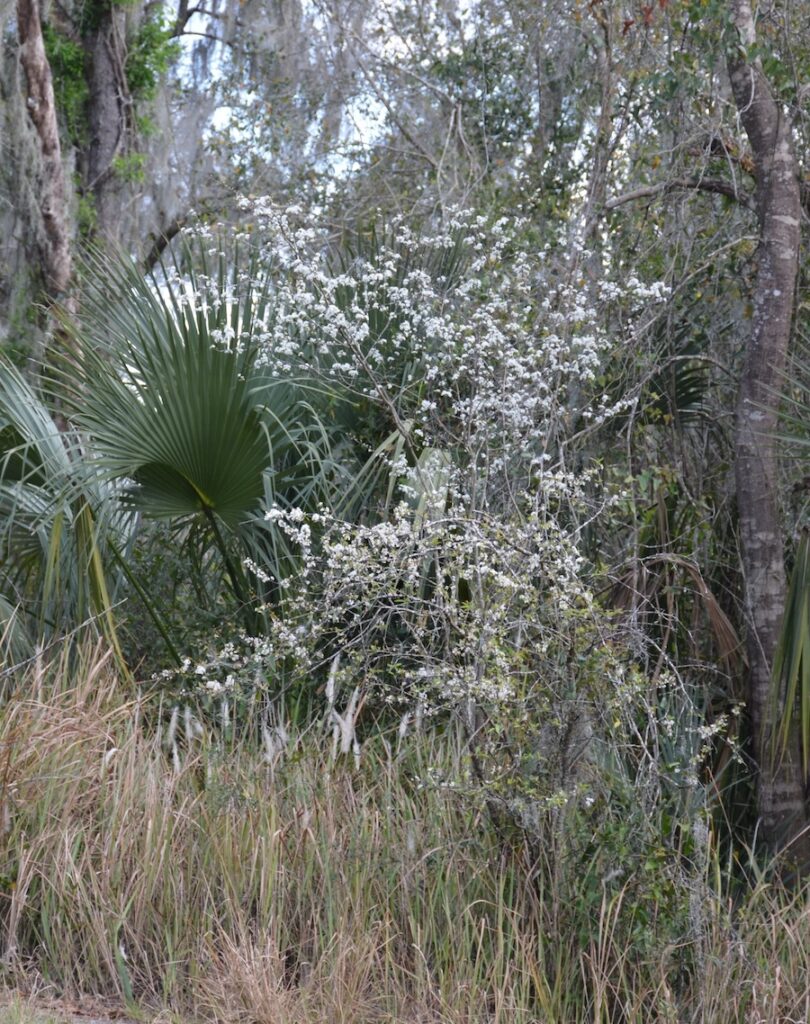
Chickasaw Plum fruit won’t ripen until June or so, but it is easy to identify the shrub now. Photo by Green Deane
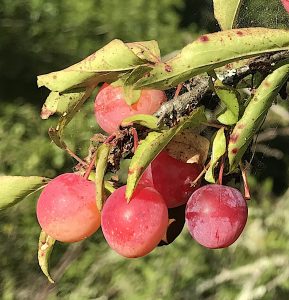
Wild Plums can be as sweet as cultivated plums. Photo by Green Deane
This is the time of year to easily locate a wild edible and an invasive non-edible ornamental.The edible is Chickasaw Plum, the non edible is Bradford Pear. Both can be found with small white blossoms this time of year and no leaves, thus they standout in the landscape. The plum creates a tasty fruit that is usually ripe by June. The pear produces a woody acorn size fruit that is too tough to eat. The plum is usually short, the pear tall, the plum has sweet-smelling blossom and a few small thorns, the pear has foul-smelling blossoms and many large thorns. You can watch my video here. You can read about the Chickasaw plum here.
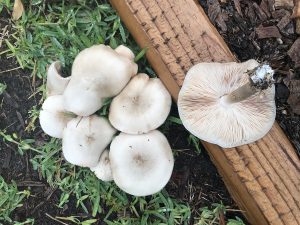
Deer Mushrooms like wood and cool weather. Photo by Green Deane
Deer Mushrooms are edible but not too well liked. They are not difficult to identify down to the genus. And while edible, they are not sought out because of unremarkable taste and not much body (the caps are mostly gills.) They are better than what you can buy in the supermarket but not as good as many other wild mushrooms. My neighbor had a large Live Oak removed last fall and this spring the roots are sprouting mushrooms, in this case Pluteus cervinus or P. petastus. Necessary microscopic spores analysis requires a microscope stronger than the two I own. However, P. cervinus prefers whole pieces of hardwood in the woodlands, P. petasatus can grow on wood chips in suburbia. The name comes from the fawn-colored patch on top of the cap. Its free gills are whitish at first and become pinkish. The spore print color is pink/salmon.
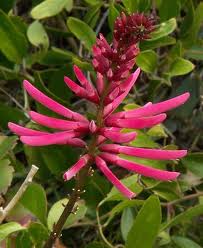
Eastern Coral Beans are easy to find this time of year. Photo by Green Deane
Soon to blossom this time of year is the Eastern Coral Bean, sometimes called the Cherokee Bean. What is odd about this plant is the edible flowers produce toxic beans. So we do not eat the red and black beans. A few of the red blossoms are edible raw — with precautions — but they are usually boiled then mixed with other foods notably scrambled eggs. When you cook the blossoms they turn light green. The distinctive shape of the leaves makes the shrub easy to identify. Young leaves are edible cooked but are marginal fare. Like Pawpaws they prefer dry, sunny places. A few raw red blossoms seem okay but if eaten in larger amounts they can be mind altering and approaching dangerous. Boiled they are fine. (Juice from the shrub’s stems, by the way, has been used to treat scorpion stings and the toxic beans have a chemical that is close to the alkaoid curare which can cause breathing paralysis.) You can see my video about the species here or read more about the Eastern Coral Bean here.
Watercress/Wintercress grew in a ditch behind an apartment complex I lived in near Sanford, Florida, some 35 years ago. How did the Eurasian native Nasturtium officinale, get there? It came to North America with the Europeans, found a good home, and stayed. Alabama became the epicenter of cultivating it then later Central Florida. Sanford, by the way, is named for Henry Sanford one of Lincoln’s ambassadors. He is called “General Sanford” but the gentleman never served in the military. He got the title for donating a cannon to the Union effort. Sanford was, however, big on big farming and for a few decades made the city of Sanford the big place to go in Central Florida not Orlando.
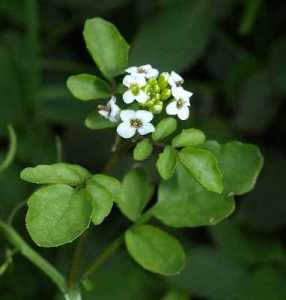
When President Calvin Coolidge came to Central Florida in 1929 it was to Sanford he went not little-ol’ backwater Orlando. The city of Sanford had everything: River, rails, road and Rollins college. But it lacked leadership giving Orlando a chance to make its mousey mark. Rollins moved to Winter Park. As Coolidge did so did watercress which is why it ended up in the ditch behind the apartment complex in Sanford. The entire area was truck farms and one of their winter crops was watercress. Peppery like nasturtiums it is edible raw or cooked but make sure you get it from wholesome water. Nasturtium by the way literally means “twisted nose.” Where I collect watercress to be eaten raw is about a half mile down stream from the Wekiva River boil (its main spring and headwater.) But there’s a lot of water hemlock around so I have to pick carefully. This time of year the river is mostly water hemlock. To read more about watercress go here. I have a video on watercress here. To read about the deadly Water Hemlock go here. It i also found in Wickham Park were I have a class this Weekend. (See below)
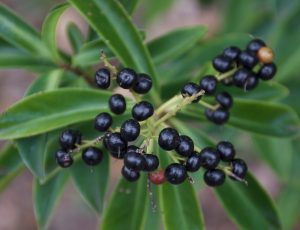
Marlberries aren’t too edible. Photo by Green Deane
Marlberries and I don’t meet too often, about once or twice a year and then usually while I’m conducting a class so I don’t have the time to get acquainted better. There is also a certain lack of motivation because even at its best marlberry is not a great trailside nibble. A complicating headache is there are several malberries of varying quality. They are also related to the invasive species Coral Berry, Ardisia crenata, which has been implicated in cattle poisoning. Reportedly found mid-Florida and south I have found Marlberries in Dreher Park in West Palm Beach, LaStrange Preserve in Ft. Pierce, and Emerson Point near Sarasota. Around the same time and in the same habitat you find Marlberries you can also see Rapanea punctata, Colicwood, one of those mystery pants one finds in wet woods this time of year. It looks like a drab cross between a mangrove and a beautyberry and used to be called Myrsine guianensis. Colicwood’s small yellow blossoms and black fruit grow directly on the branches, helping you identify it. There’s not a whole lot of literature on the species so the berries are probably not edible. As it is called “Colicwood” suggest some medicinal uses. To read more about the Marlberry and its strange relatives go here.
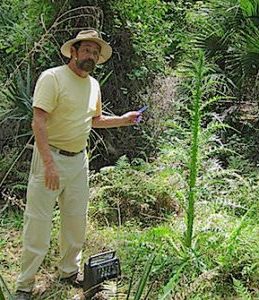
Foraging classes are held rain, shine, hot or cold. Photo by Nermina Krenata
Foraging Classes: With moderating weather, attending classes should be easier as we go into spring.
Saturday, March 16th, Wickham Park: 2500 Parkway Drive, Melbourne, FL, 9 a.m. to noon, meet at the dog park.
Sunday, March 17th Eagle Park Lake, 1800 Keene Road, Largo, FL 33771. Meet at the pavilion near the dog park. 9 am. to noon.
To read more about the classes, to pre-pay or sign up, go here.
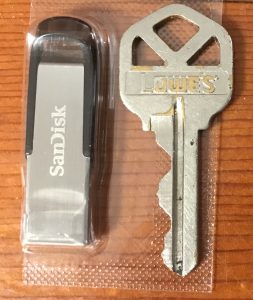
You get the USB, not the key.
172-video USB would be a good end of spring present and is now $99. My nine-DVD set of 135 videos has been phased out. The USB videos are the same videos I have on You Tube. Some people like to have their own copy. Most of the 172 USB videos have to be copied to your computer to play. If you want to order the USB go to the DVD/USB order button on the top right of this page. That will take you to an order form.

Green Deane Forum
Want to identify a plant? Perhaps you’re looking for a foraging reference? You might have a UFO, an Unidentified Flowering Object, you want identified. On the Green Deane Forum we — including Green Deane and others from around the world — chat about foraging all year. And it’s not just about warm-weather plants or just North American flora. Many nations share common weeds so there’s a lot to talk. There’s also more than weeds. The reference section has information for foraging around the world. There are also articles on food preservation, and forgotten skills from making bows to fermenting food. And let me add an apology regarding page access. We have been having computer and word presses issues, restricting site availability.
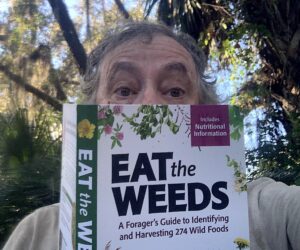
Finally, a physical copy of the book.
Now in its second printing is EatTheWeeds, the book. It has 275 plants, 367 pages, index, nutrition charts and color photos. It’s available in many locations including Amazon. Most of the entries include a nutritional profile. It can also be ordered through AdventureKeen Publishing.
This is weekly newsletter #591. If you want to subscribe to this free newsletter you can find the sign-up form in the menu at the top of the page.
To donate to the Green Deane Newsletter click here.

